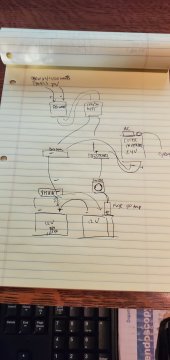BlueMarblePA
Solar Enthusiast
In this video, he opens up the Victron Phoenix, and he finds two options -- Floating ground versus earth ground. He pulls out the jumper from floating and plugs it into ground. I assume he then takes the chassis ground and connects that to earth ground. Should I do the same for my off-grid shed installation?



